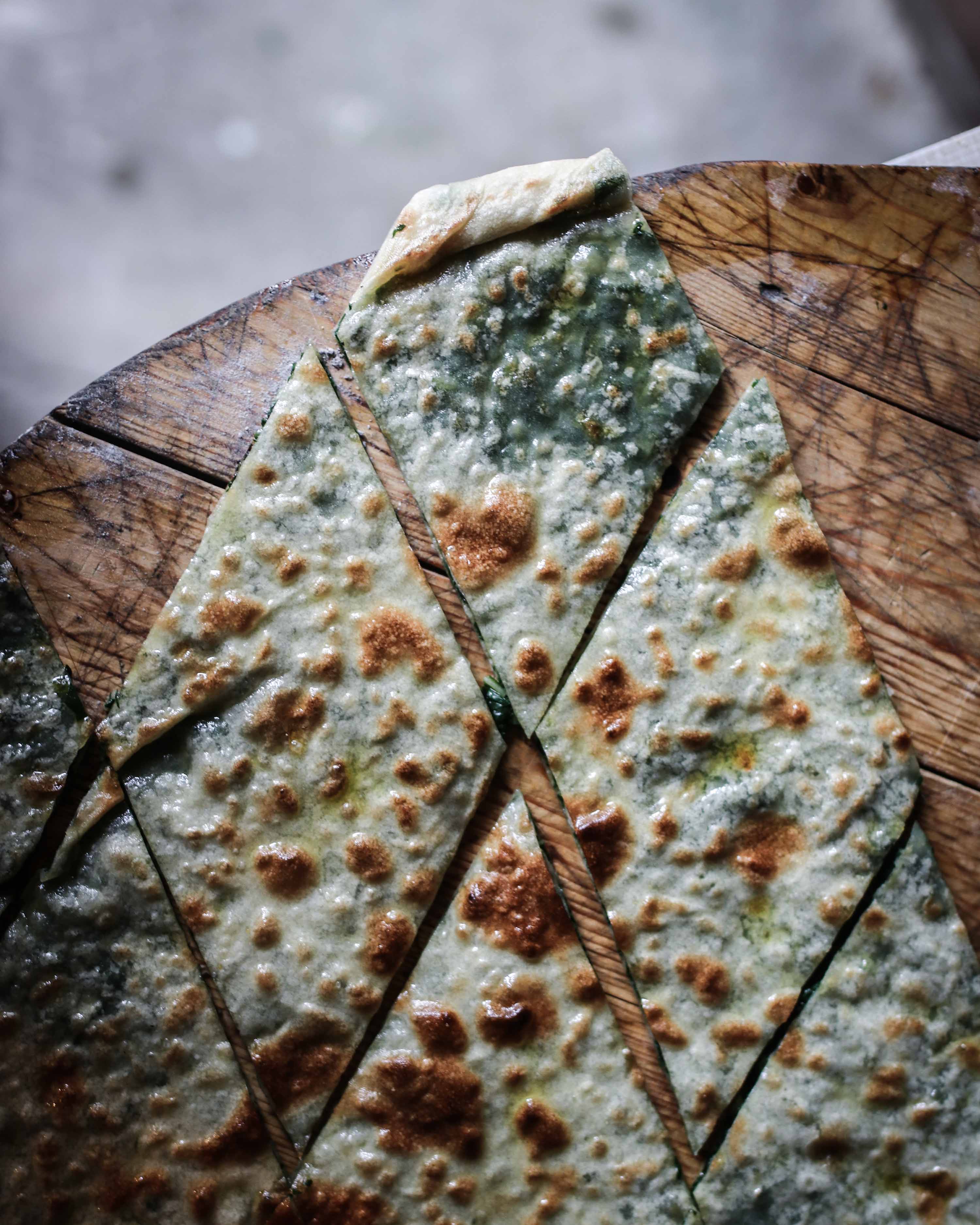Soparnik
Nov 6, 2024
Soparnik is a Dalmatian specialty from Poljica. Part of my family is from the Poljica region, from the villages of Srinjine and Tugare, so preparing soparnik has become a family tradition for holidays and special occasions. Soparnik is a traditional dish made from nature’s simple offerings – chard, olive oil, garlic, and flour – authentic ingredients in their purest form. Today, it is recognized as a Croatian culinary treasure and part of the intangible cultural heritage. The European Commission has listed soparnik as a non-material national heritage of Croatia.
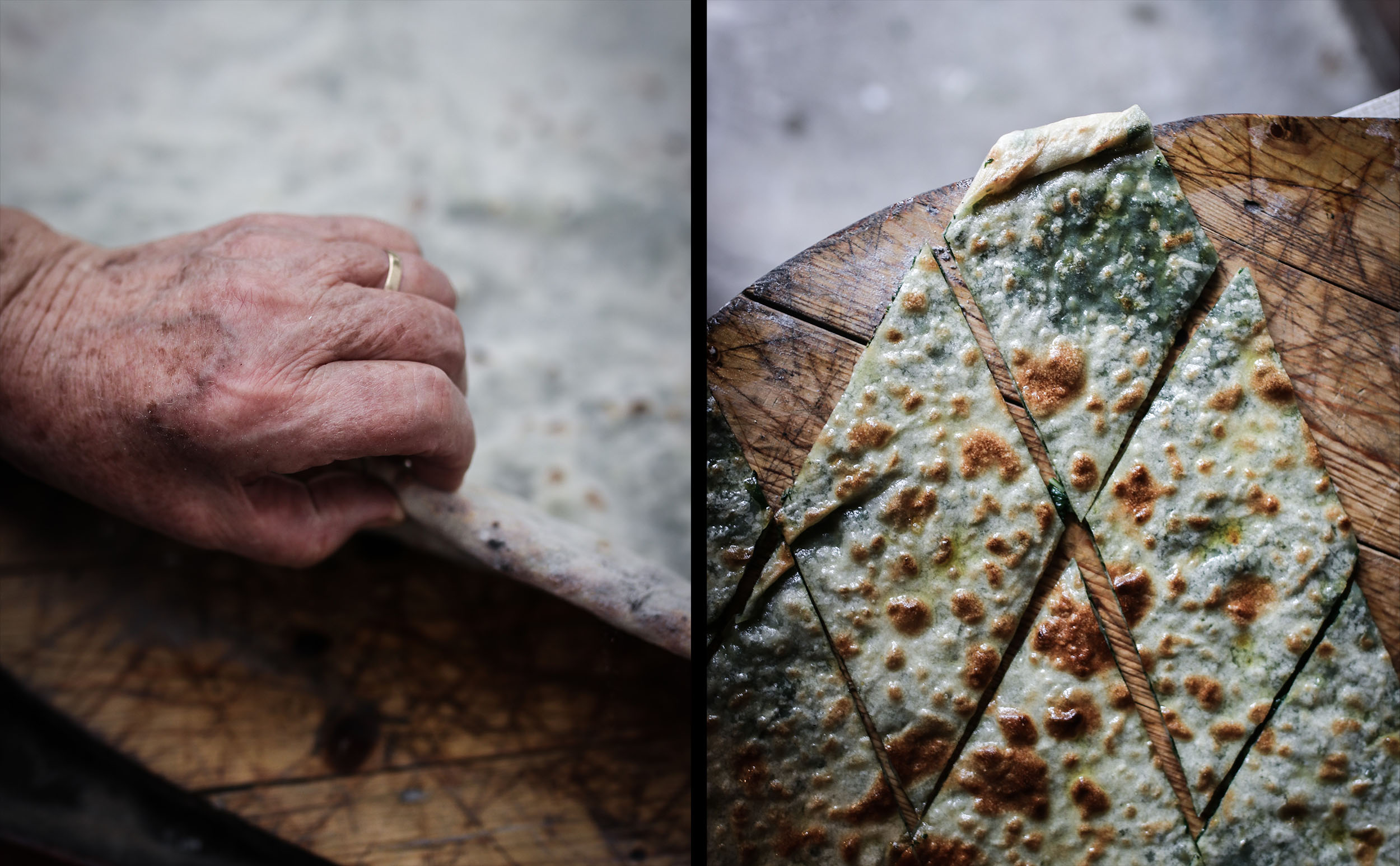
Although each family has its own variation or twist, soparnik generally consists of a large, thinly rolled-out dough filled with a chard, onion, and olive oil mixture. Like many other traditional delicacies worldwide, soparnik is a plant-based specialty.
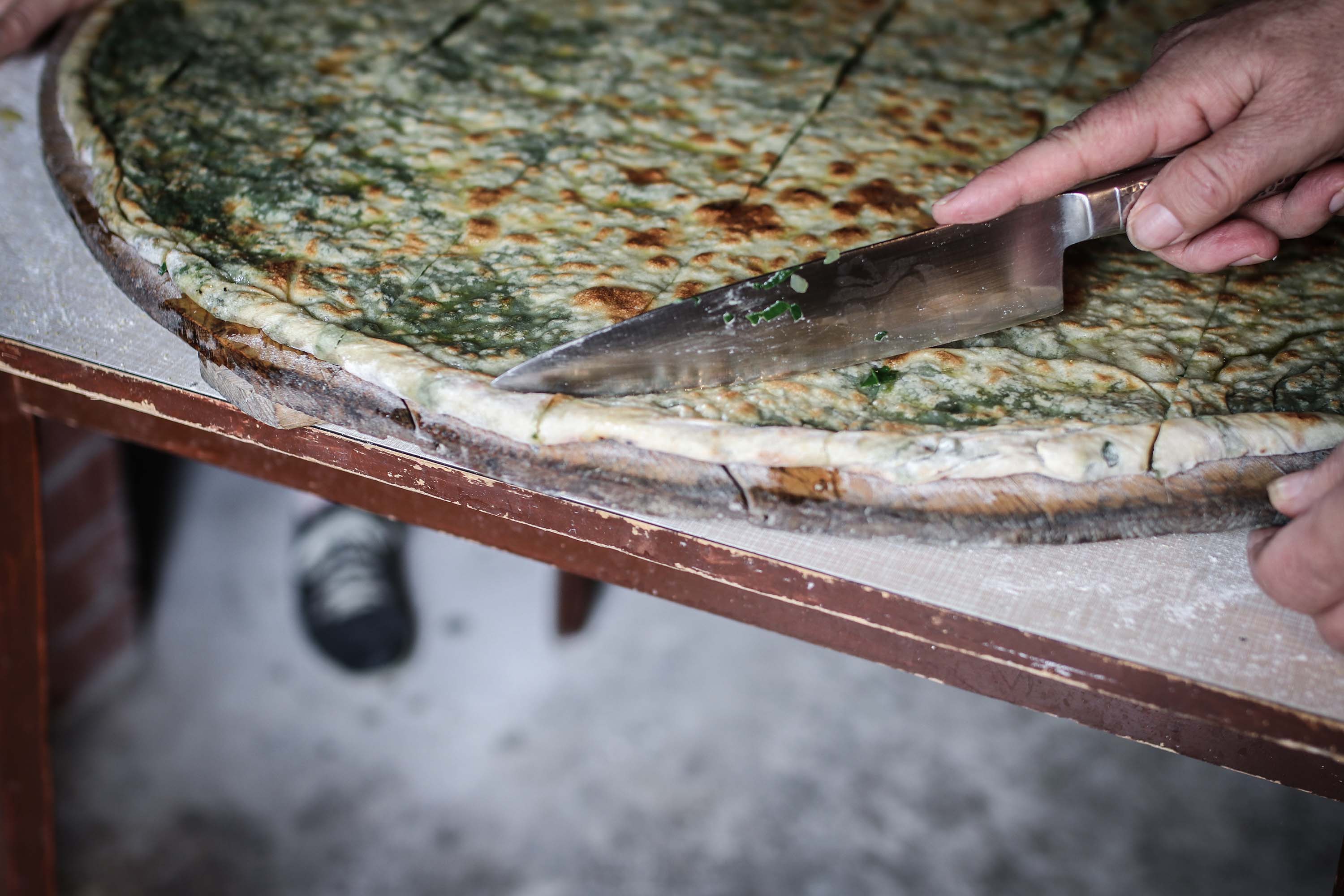
It’s baked directly on a well-heated hearth called ‘komin’, covered in embers, giving it a unique smoky flavour and aroma. Once baked, it’s drizzled with additional olive oil, sprinkled with finely chopped or mortar-crushed garlic, and cut into diamond-shaped pieces. Preparing soparnik is a true ritual that brings generations together and requires skill and love. In our family, everyone participates in its preparation – from picking and drying the chard, chopping garlic, and preparing the wood, to rolling the dough and baking.
Though many enjoy soparnik cold, I find it best when still warm, with a crispy crust. The combination of juicy filling and a hint of smoky aroma is what makes soparnik truly special.
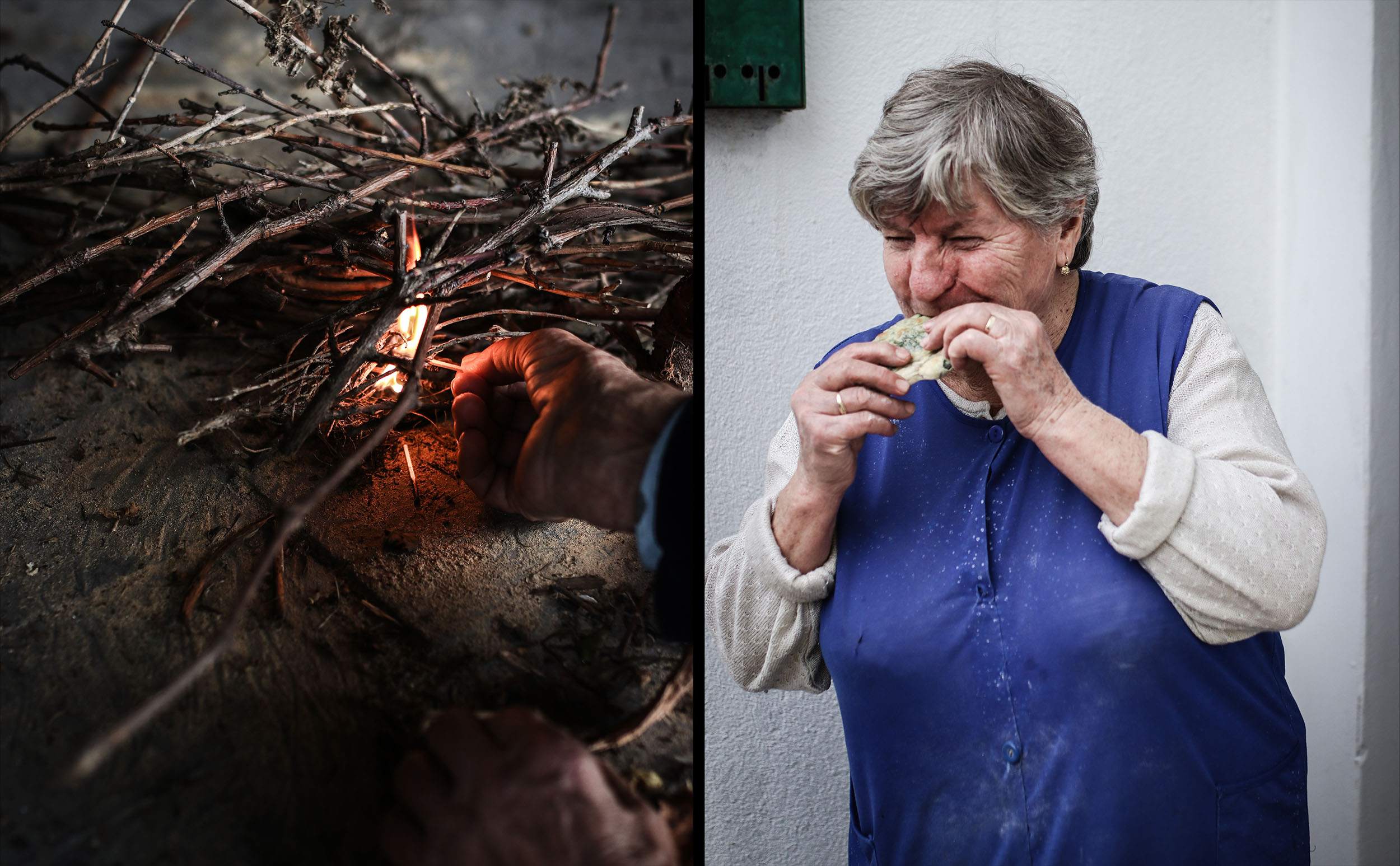
Ingredients (for a soparnik 1 m in diameter)
Dough:
1000 g all-purpose flour
460 ml lukewarm water
Salt
2-3 tbsp olive oil
Filling:
1000 g - 1200 g chard
2 onions
100 ml olive oil
Salt
For shaping:
Plain flour
Coarse cornmeal
Coarse salt
Final coating:
Olive oil
Finely chopped garlic
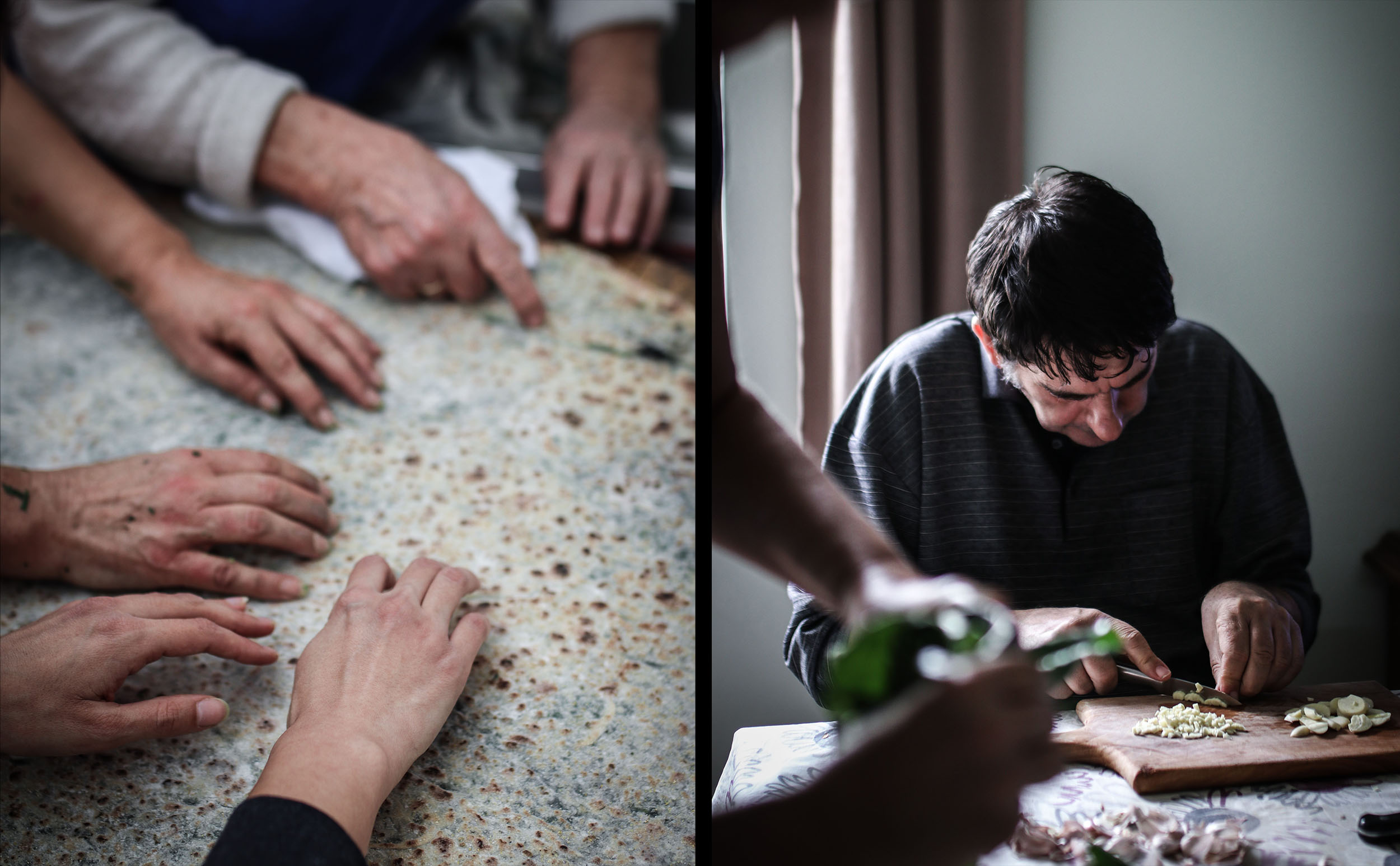
Preparation
Add a pinch of salt to the flour and lukewarm water, then knead the dough by hand or with a mixer using the dough attachment. It will initially be firm and dense. Cover it and let it rest for 5-10 minutes, then divide it into two equal parts and shape them into balls. Brush each ball lightly with olive oil and place in bags or containers with lids. Leave at room temperature for at least an hour, ideally overnight in the fridge.
Wash and dry the chard well. Slice the leaves into strips and the stems into small cubes, then add finely chopped onion. Just before assembling the soparnik, season the filling with a few good pinches of salt and pour over 100 ml of olive oil, then mix well.

The dough should be at room temperature. Using flour and a rolling pin, roll out the dough balls on a sinija (a large wooden board used to shape the soparnik) into even, thin sheets. Spread the filling evenly over the rolled-out dough, leaving the edges free. Cover the filling with the second sheet of dough, then fold the edges inward. Sprinkle the soparnik with coarse salt and cornmeal, then cover with another board.
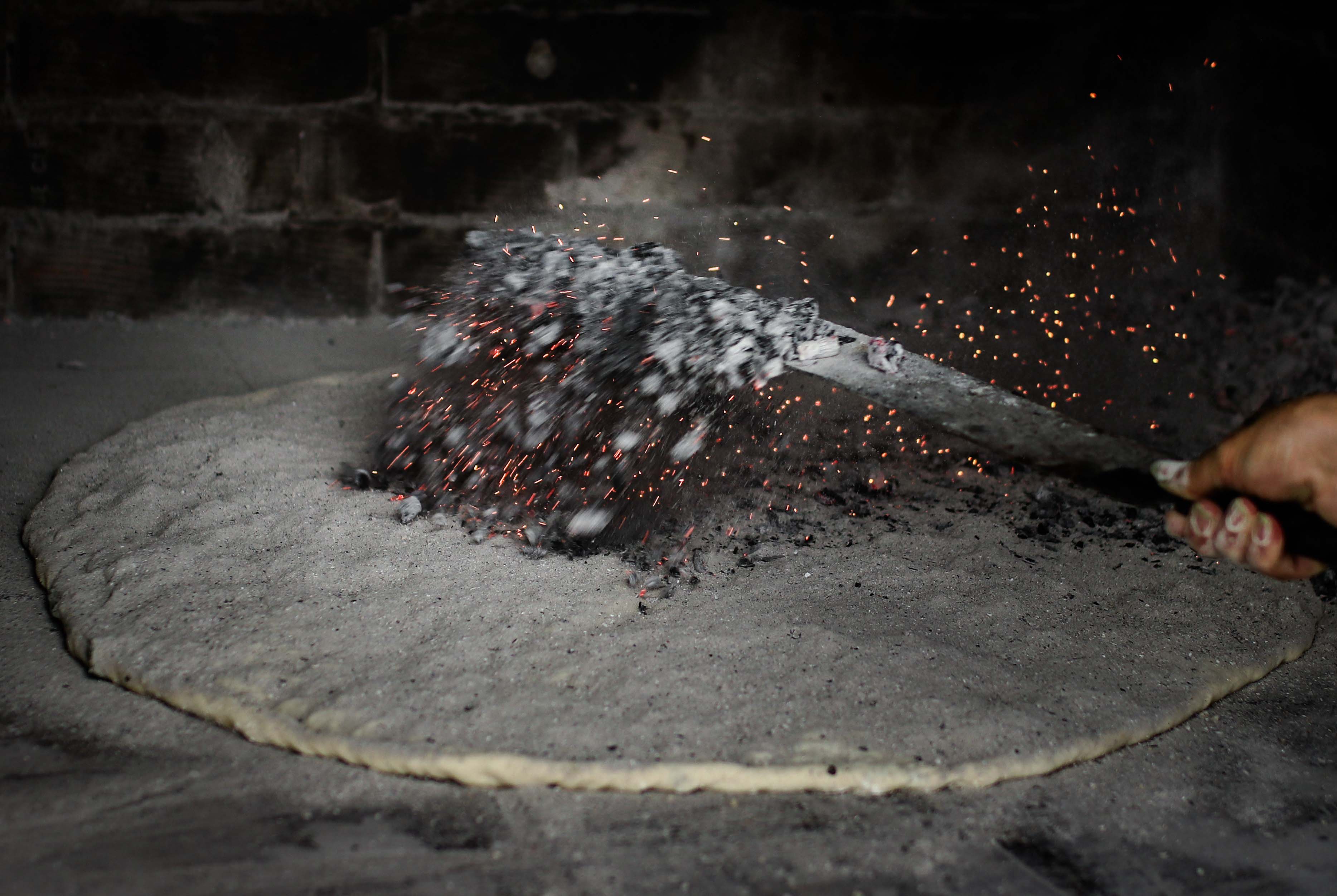
On the hearth with an even layer of embers, clear away the ashes and embers, then place the soparnik onto it. The cornmeal-coated side should be facing down. Cover the soparnik with hot ash and embers and bake for about 10 minutes, until it puffs up. Continue baking for another 5 minutes. When done, thoroughly clean off any ash, excess salt, and cornmeal. Drizzle it with olive oil mixed with chopped garlic on the side that was on the stone. Cut the soparnik into diamonds and serve.
